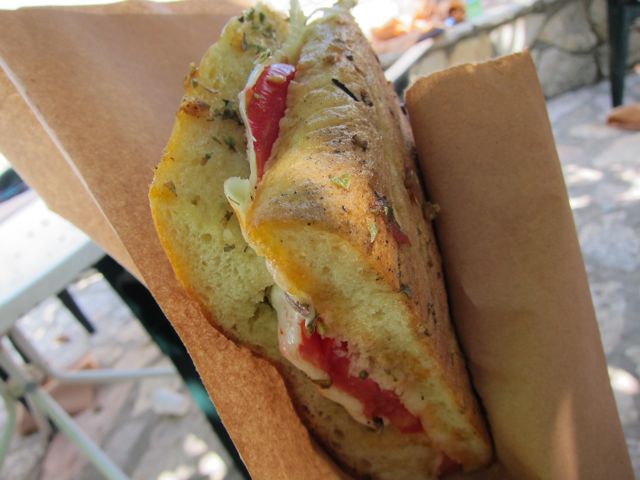
I went down to Sicily a few weeks ago at the invitation of the Tasca D’Almerita family. Just in case you don’t know, they make wine. Big time. So most of our 2 1/2 day trip was spent driving across Sicily, from one incredibly beautiful vineyard to another. Our ‘tour guide’ for this viniferous voyage was Ivo Basile, the resident Tasca enologist.
While Ivo was eloquent on all things having to do with Tasca and vino there was one word that kept popping up: Scopello. Ivo just kept talking about Scopello. Granted, Sophie was badgering him for advice to help her plan an upcoming trip to Sicily, so it was natural that Ivo would encourage her to go to what he thought was one of the most beautiful spots in Sicily.
But really. It was Scopello this and Scopello that. Scopello, Scopello, Scopello. As you can imagine after two days of this, both Sophie and I were pretty darn curious.
So, with only a few hours left of our Sicily sojourn, we detoured to Scopello on our way back from Mozia to the airport in Palermo.
And Scopello is beautiful. Breathtakingly so. The drive up from Castellammare del Golfo skirts the coast and we had a view of the of the sea in both directions that looked almost fake it was so gorgeous. Up the road leading towards the Riserva dello Zingaro, we finally arrived in Scopello.
“That’s where I was married” Ivo pointed out as soon as we got out of the car. So that explained his attachment. “And down below, on the coast, is where we had our honeymoon.” Ok, now we got it.
And Scopello is kind of that perfect Sicilian village you always hope to come across. Where you’d either like to buy a house, get married, or both. It’s not big at all, really only a piazza with a fountain and a connecting baglio (enclosed courtyard). Everything is built of honey colored stone, blinding in the noon day sun. The sea breeze blows in from down the cliff, bringing with it the smells of wild thyme and oregano. Heaven.
While most of Ivo’s hankering for Scopello was all romantic, there was another thing that drew him here: pane cunzato.
We wandered across the down. Well, across the piazza, since that is just about all there is. Then down an alley where we turned into a pocket sized bakery. The smell of freshly baked bread was overwhelming as we made our way to the counter.
Pane Cunzato is quite simply ‘dressed bread.’ It’s not one of those Italian recipes that use old left over bread, like panzanella or pappa al pomodoro. Instead this is how Sicilians make a meal out of a loaf of freshly baked bread with a few extra ingredients.
A loaf of bread is split in half lengthwise. Olive oil is drizzled on both parts. The bread is then layered with sliced tomatoes, mozzarella or other cheese, salt, pepper and oregano. And a few anchovies if you’re feeling fishy. The top is put back on, and the loaf is cut into single sized portions.
(This is a poor man’s sandwich, where the main star is the bread and the other ingredients are used to add flavor. It is not one of those American type sandwiches on steroids that include a quarter pound of ham or corned beef.)
The sandwiches are made ahead of time, to give the oil and tomato juices a chance to soak deeply into the bread. Once we each ordered our Pane Cunzato, it was slipped back into the wood burning oven for a few minutes to warm it up. Our plate piled high, we headed outside to grab out table under the massive fig tree.
And here is what is so special about Pane Cunzato in Scopello. Yes, the bread is perfect. And yes, the ingredients inside are delicious. But it’s the combination of that – plus sitting in the gently blowing breeze underneath the shade of a fig tree – that makes this one of life’s great pleasure.
As Sophie and bit into our Pane Cunzato we smiled at Ivo, with olive oil dribbling down our chins. Scopello. Now we really got it. 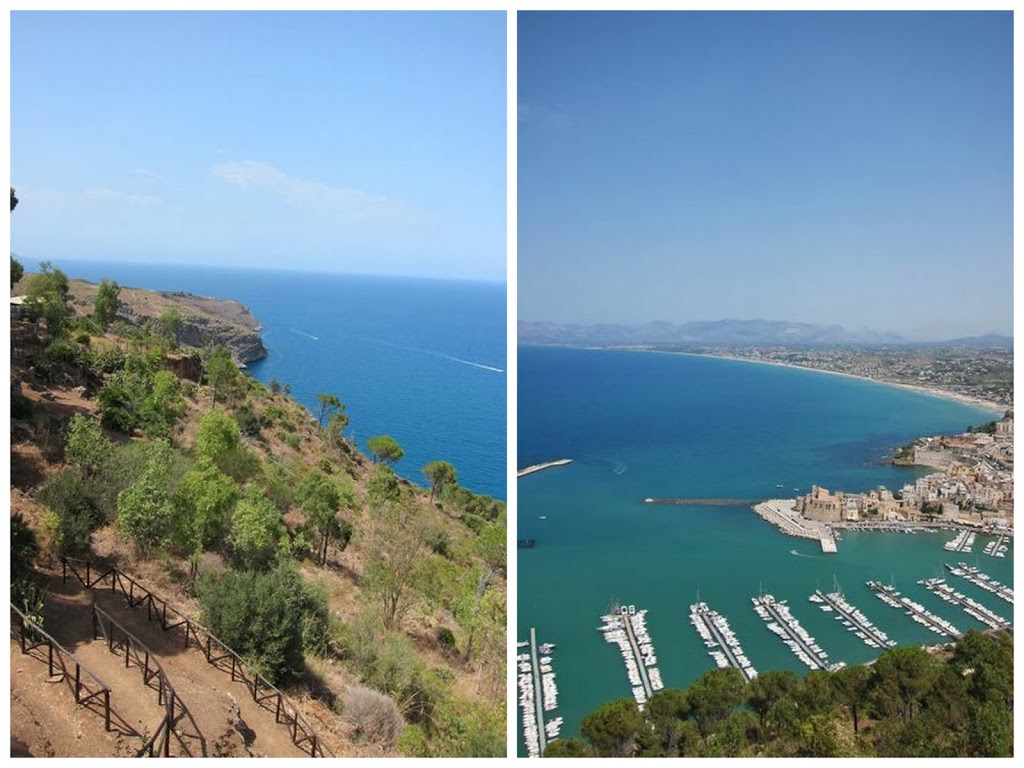
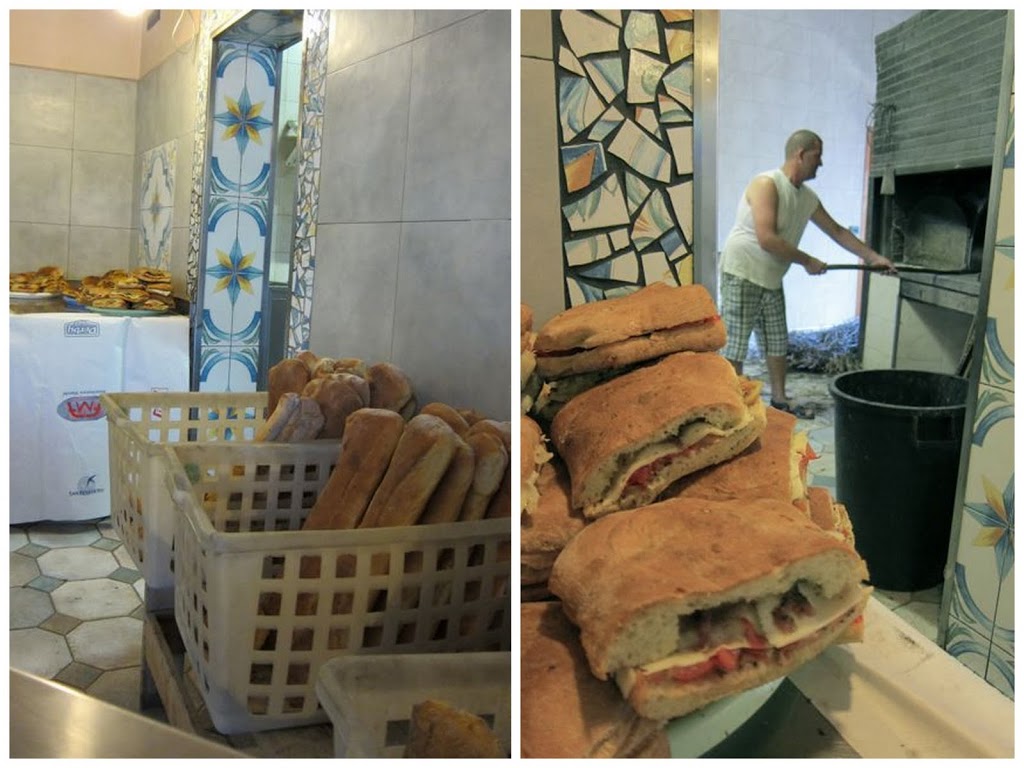
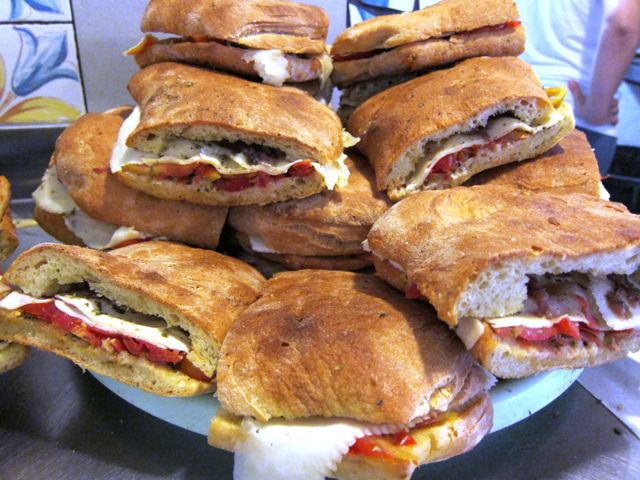
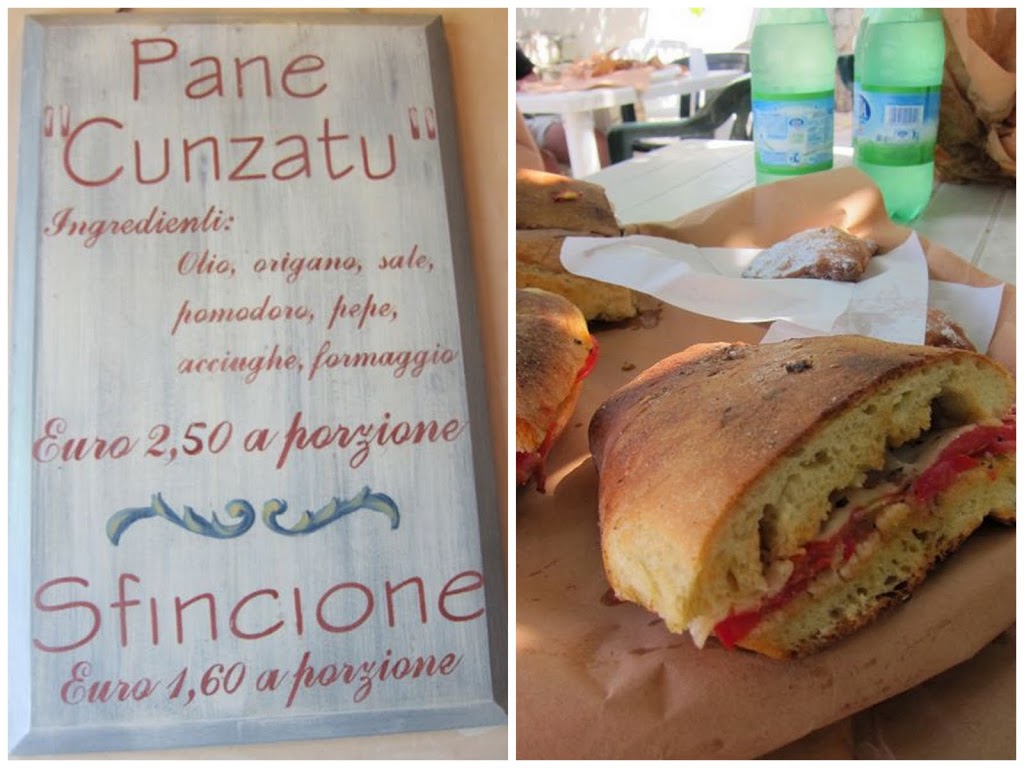
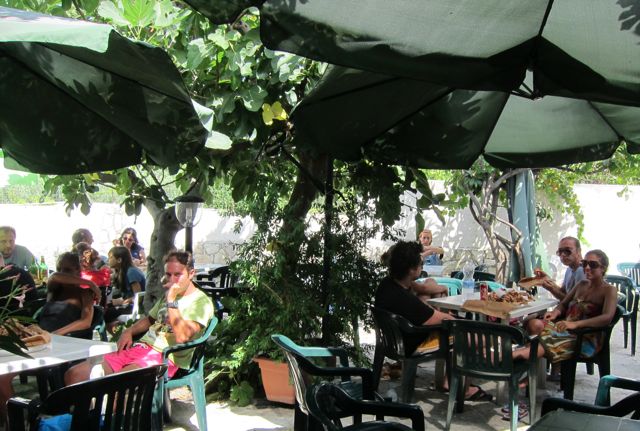
Pane Cunzato
Scopello
This place barely has a name, much less a phone number. Once you get to Scopello (which isn’t that easy without a car) just ask. It’s not the one inside the Baglio, but down a back alleyway.
Anything tastes better when seated under a fig tree (even the figs themselves)
@Nathalie: you are the fastest commenter in the West!
Those look amazing! they remind me of the sandwiches my uncle used to make.
My god, I’m salivating like one of Pavlov’s dogs!
Love the dialect too: “cunzato”, apparently means “married” in Sicilian dialect. Therefore the “marrying’ of all the flavors. Fantastic!
Angela
Love Pane Cunzato and even more, Scopello! My Sicilian cousins have a summer house in the Castellamare del Golfo area and I have spent many summers swimming at the beach/cove in Scolpello. The post and photos make are beautiful, even though they do make me miss not being there this summer.
Those fig trees you mentioned were planted by my Grandfather over 50 years ago. That restaurant is owned and operated by father’s family. The building where the restaurant is located used be my father’s house when he was a kid. It’s crazy to think that it is now one of the major tourist attractions in that tiny town.
What an amazing story! So glad you found this post, and that you shared it.
Cunzato is dialect for condito, with dressing and or with condiment.
I love pane cunzato and will be making it in Austin Texas this Wednesday for my small group, a group of women I meet with regularly.
In Marsala (province of Trapani) where I lived for 10 years, just moved back to the US last May, they don’t put it in the oven. They make it with Tuna too and I will be making caponata for the ladies too, hoping they like it.
Scopello is amazing, look for Cala Mazzo di Sciacca when you are there next.
Ciao da Dea in Austin. 🙂
Oh thank you for the memories. I too visitied Scopello, fell in love with it & their Pane Cunzato & wrote about it. I googled to recall the spelling and your site came up. Thanks for the memories 🙂
Heidi xo